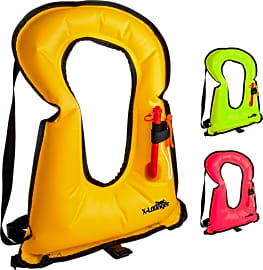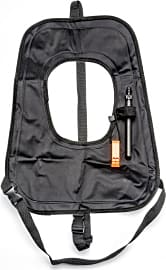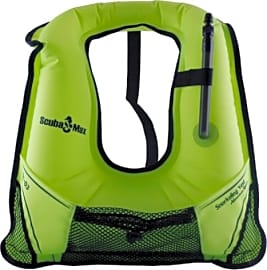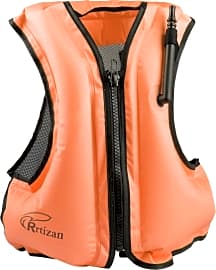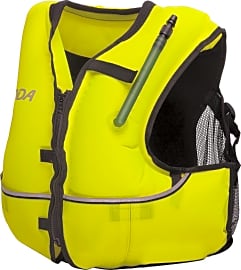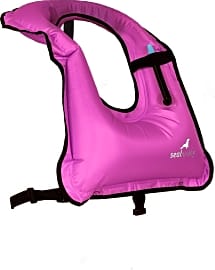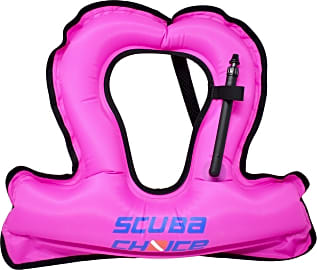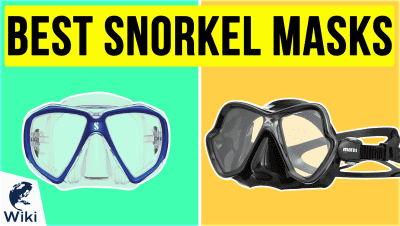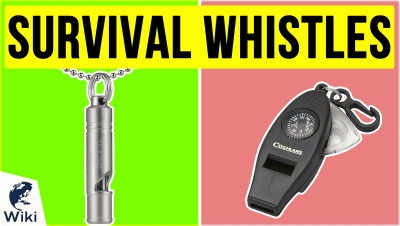The 10 Best Snorkel Vests

This wiki has been updated 35 times since it was first published in February of 2017. Exploring the beauty of underwater life is a thrilling experience that everyone should add to their bucket list. And with one of these affordable snorkeling vests, you can stay out longer without becoming tired and give yourself some peace of mind when it comes safety. They're offered in a range of sizes and styles, so you're sure to find one suitable for your next aquatic adventure. When users buy our independently chosen editorial picks, we may earn commissions to help fund the Wiki.
Editor's Notes
July 09, 2019:
Before discussing our top picks, we'd just like to quickly remind you that snorkel vests aren't life jackets; they're aids that make snorkeling less tiring and a little easier. If you don't know how to swim at all, it's probably not a good idea to rely entirely on one for your safety. With that said, we still believe that the Deep Blue Gear XL, X-Lounger Portable, and Innovative Scuba Concepts Life are all great options. They come in various colors and sizes, so there's one for everyone, and they're inexpensive, so you can still afford a top-notch snorkel mask. Of the three, the Deep Blue Gear model is probably the simplest, since it doesn't have a safety whistle, like the other two. But it's made to high quality standards and is comfortable for both experienced and novice snorkelers. We also still like the Scubapro Cruiser and Scuba Max SV-06-M, but these are rather pricey and so may not be the choice for those who only go snorkeling very rarely. Those who hit the water often, on the other hand, may well appreciate their fast inflation and deflation as well as their handy pockets.
Special Honors
U.S. Divers Snorkel Vest It may not have tons of fancy extras, but the U.S. Divers Snorkel Vest does what it needs to do — keep you comfortable while you float. Its single bladder is a breeze to inflate, while the bright yellow helps keep you visible to boats. usdivers.com
A Brief History Of Snorkeling
This allowed them to harvest sponges that grew along the coast.
From the first moment man ever gazed into clear water at the fish below, swimming and breathing free, he has thought to himself, "Pfft...I bet I could do that."
Unfortunately, that was nothing but a dream for centuries, until about 3000 B.C.E., when early denizens of the island of Crete figured out a way to hollow out reeds in order to breathe underwater. This allowed them to harvest sponges that grew along the coast. The technique would also be used in cartoons thousands of years later.
Some millennia later, around 900 B.C.E., Assyrian divers came up with a new method that involved filling animal skins with air and breathing from it while under the surface. The same basic idea was used by Alexander the Great in 333 B.C.E., except he created a large diving bell that would trap oxygen underneath it, allowing divers to come up and breathe periodically.
While the diving bell was fantastic for staying submerged longer, it didn't offer much in the way of versatility. You couldn't venture far away from the safety of the bell, and it didn't improve visibility at all (so you'd never see that shark coming...). Still, it was the best we had for a few thousand years.
Around the time of the Renaissance, Leonardo da Vinci created a whole selection of new breathing apparatuses, ranging from long hollow tubes to self-contained diving suits.
In 1771, a British engineer named John Smeaton designed a pump that would push air through a series of pressurized tubes. Designed to work with a diving bell, it extended the diver's swim radius, allowing them to venture deeper and farther from the bell, while also serving as the inspiration for SCUBA suits later on.
Still, there was a big hurdle left to clear: the lack of visibility underwater. In the 1930s, diving was an established enough hobby — and had enough military applications — that clear, watertight masks were quickly developed. They were also created to hold breathing tubes in place, making them ideal for snorkelers.
Thanks to this added convenience, snorkeling quickly became a popular activity for people in tropical locations. Today, as many as 20 million people a year go snorkeling at least once, and it's practically a required activity for people on their honeymoon.
At the end of the day, though, it's worth considering whether being able to see the sharks coming really makes it any better.
Do You Really Need A Snorkel Vest?
When you picture yourself snorkeling, you likely see yourself in crystal clear water, surrounded by a bunch of people who look like Baywatch models, and they're all incredibly attracted to you. Chances are, a snorkel vest doesn't play into the fantasy.
However, for many people, a snorkel vest is absolutely essential — and in fact, it could turn out to be a lifesaver.
They can simply help you swim or tread water, allowing you to spend more time sightseeing.
It's important to realize that a snorkel vest is not a life jacket. It likely won't be enough to keep you alive if you can't swim, and a life jacket is designed to keep your head above water, which isn't ideal for snorkeling.
If you're a weak swimmer, though, a snorkel vest can do enough work to allow you to focus on the beauty beneath you rather than, you know, not dying. The great thing about these vests is that you can wear them completely inflated, semi-inflated, or not inflated at all, so you can customize the level of assistance you need.
It's not just poor swimmers who can benefit, however. You never know what might happen when you're out on the water — you could cramp up, become exhausted, or even get stung by a jellyfish. Having a snorkel vest on at one of these times allows you to take a break and recover, and you can always deflate it when you're done.
Not every situation has to be life-or-death to need a vest, though. They can simply help you swim or tread water, allowing you to spend more time sightseeing. Some also have pockets or mesh compartments that allow you to carry your valuables with you without having to clutch onto them the whole time.
So no, your snorkel vest likely won't make you irresistibly attractive — but it might keep you from dying, which is a pretty nice consolation prize.
Choosing The Right Snorkel Vest
Now that we've (hopefully) convinced you that you need a snorkel vest, the issue becomes picking the right one.
There are two basic styles: horse collar and jacket. The horse collar is the most common, and its shape is pretty self-explanatory. It simply slips over the top of your head and then is affixed to your body using the attached nylon straps. It's kind of like sticking your head inside a giant donut, except less delicious.
The horse collar is the most common, and its shape is pretty self-explanatory.
Jackets, on the other hand, have arm holes in addition to a neck hole. They have a single bladder in the front, and you can adjust the fit using zippers or straps. These look and fit like traditional life jackets, except they're much more adjustable.
The other main thing to consider is how the vest will be fastened to your person. Many use quick-release squeeze clip buckles, while others might have zippers or clips that attach to D-rings. Similarly, some only fasten around your waist, while others loop around your crotch as well (this makes it more secure, but could be less comfortable).
Beyond that, there's not much that can be considered a stock option on your snorkel vest. There are a variety of accessories you can look for, like pockets, safety whistles, and neon stripes for added visibility, but none of those things come standard on vests. You'll have to decide what features are most important to you, and shop accordingly.
The most important thing, of course, is that you find one that you'll actually wear, because it can't save your life if you leave it on the boat.


